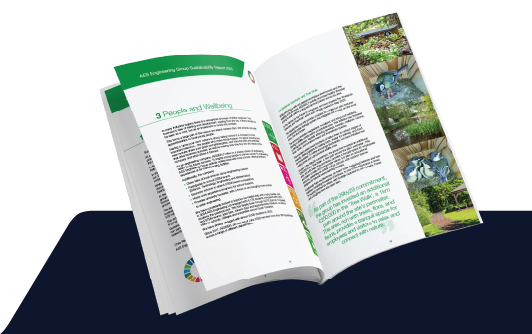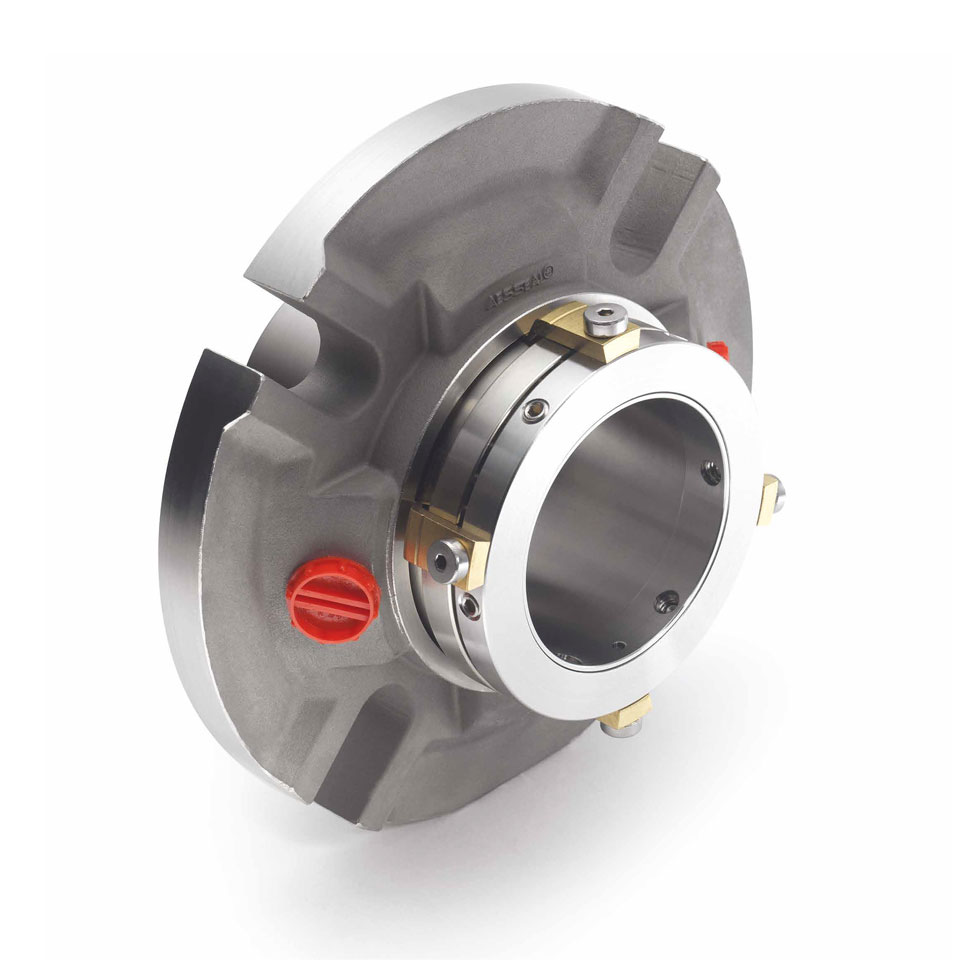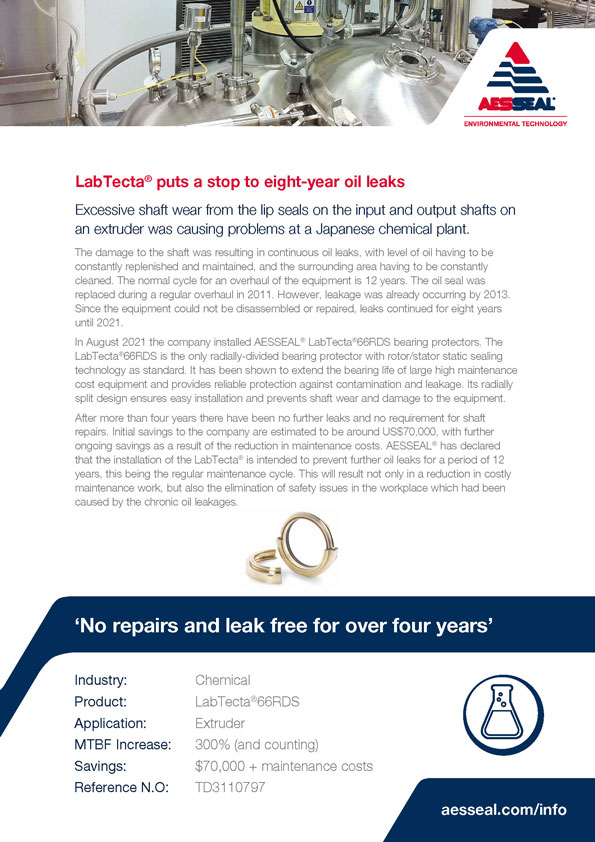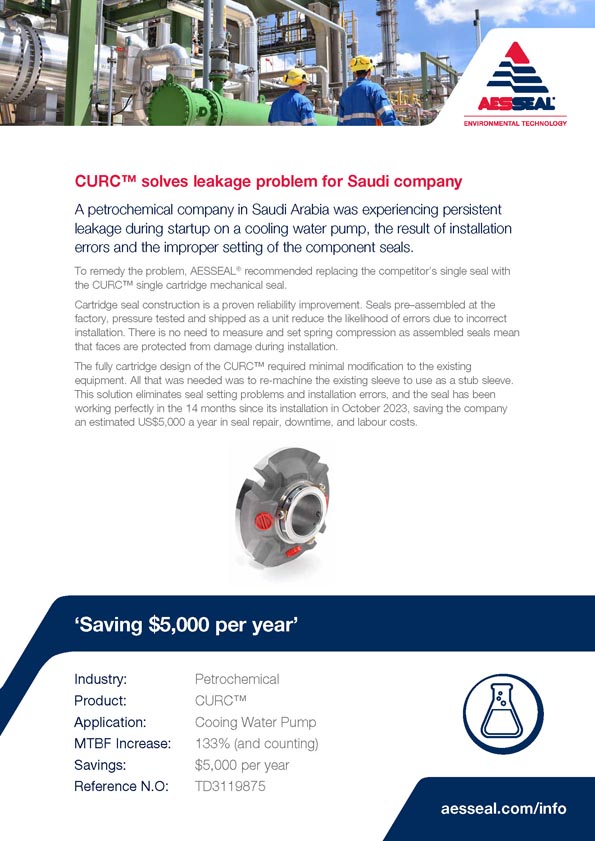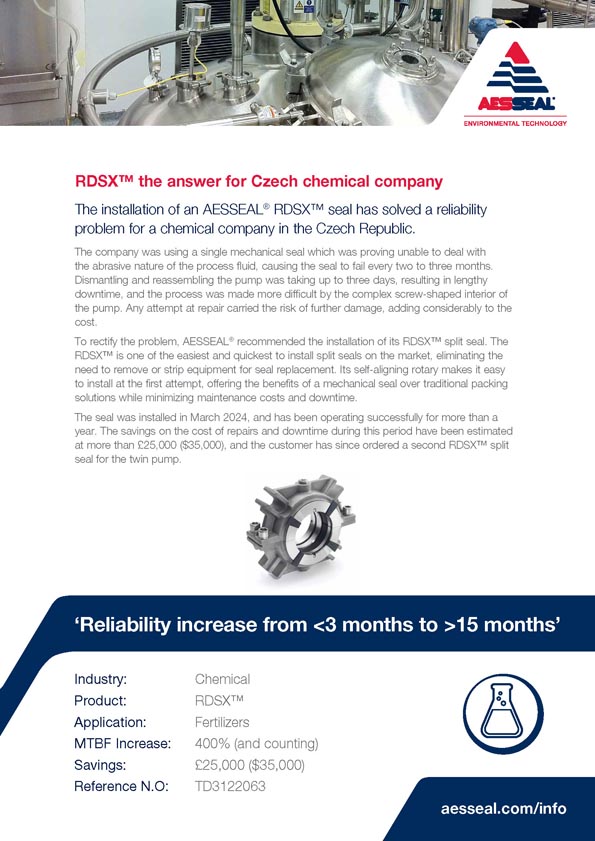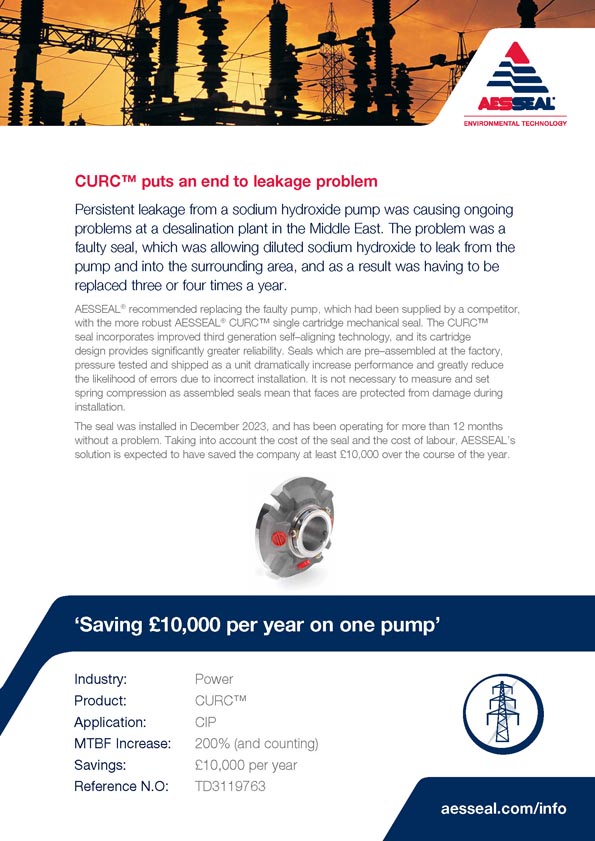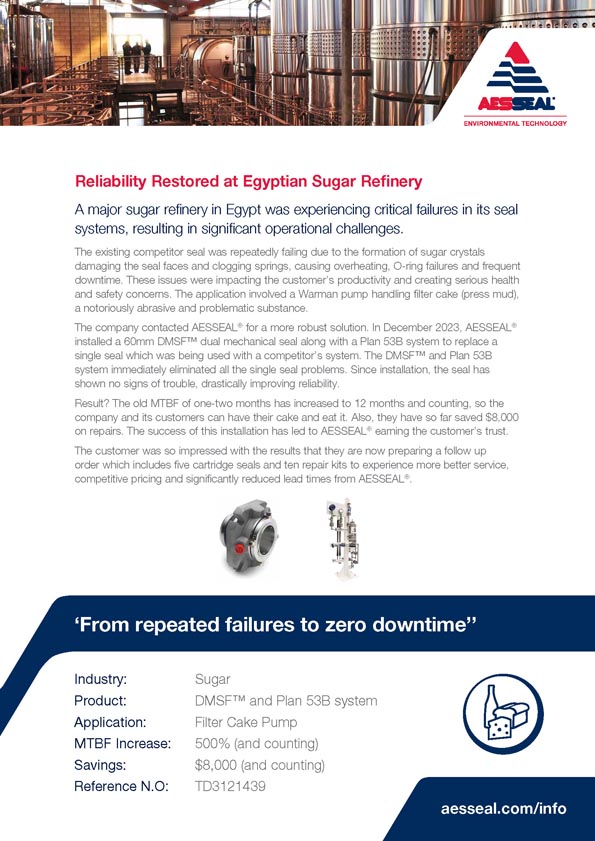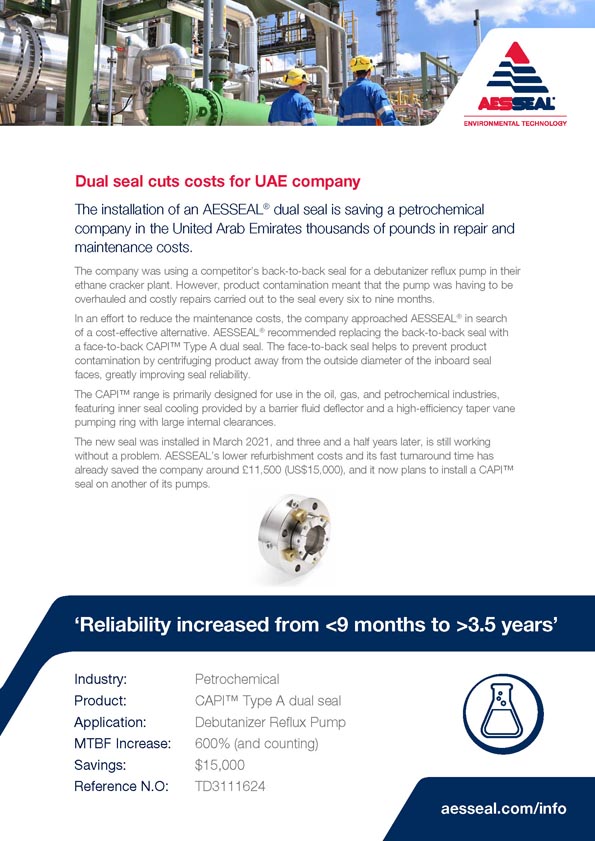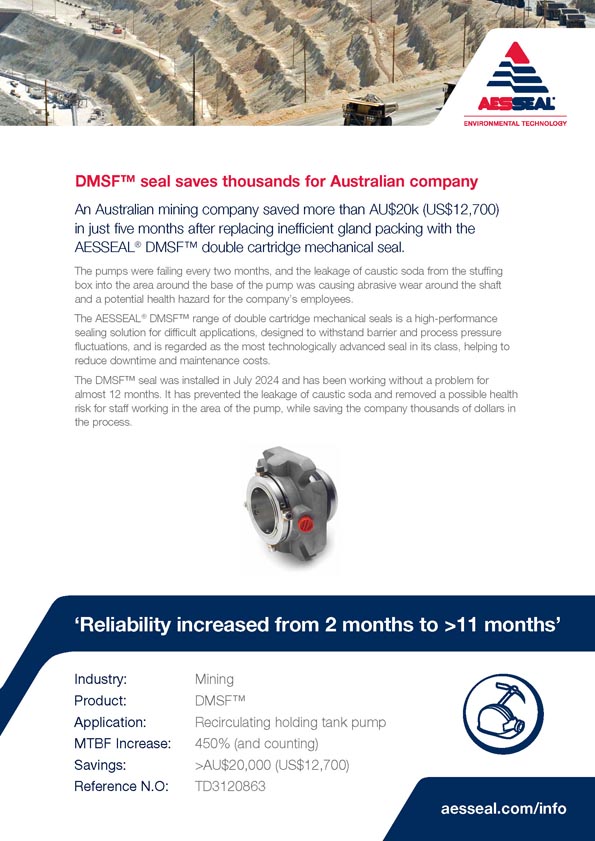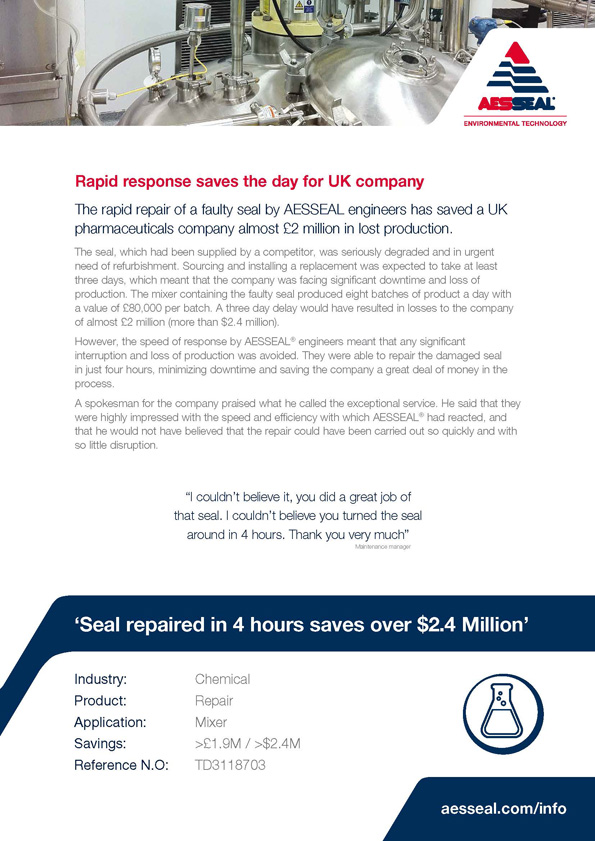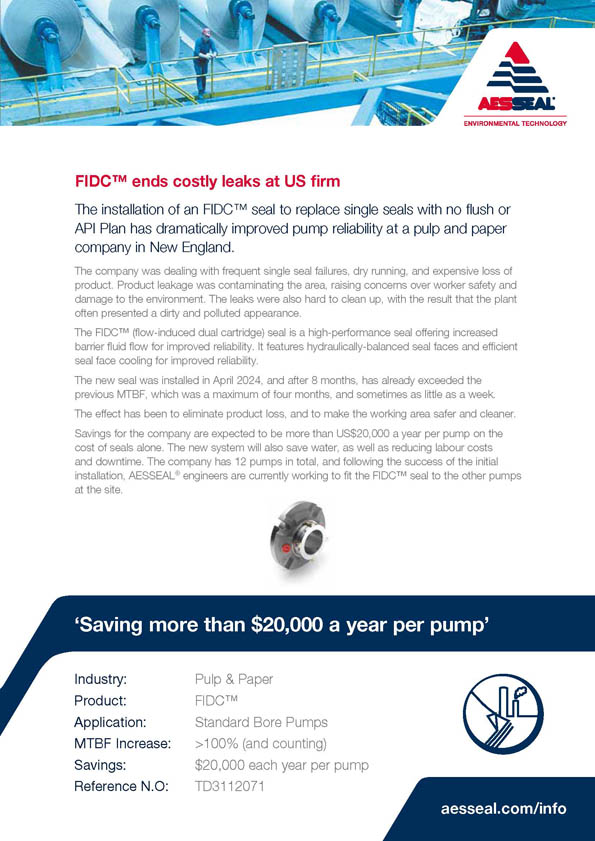
The installation of an FIDC™ seal to replace single seals with no flush or API Plan has dramatically improved pump reliability at a pulp and paper company in New England.
More Industry Related Content
With Owen Trundy
What kind of seal was the company using, and for what kind of pump?
The pumps are Goulds 3196 MT. They have a total of 18 pumps, and all of them were having the same issue, which was that the single seal wasn’t able to cope with the abrasive nature of the product. The result was that the seals were failing on a regular basis, sometimes after just a few days. At other times they would last for a few months, but the abrasive nature of the product and its inability to utilize a flush meant that they were always likely to fail sooner or later. The problem was made worse by the fact that the product in question is color dye, which is critical to the process, but also very expensive, so it’s important that it’s not wasted or diluted.
How did you learn about the problem in the first place?
The company was already an AESSEAL customer, and as soon as I was introduced as the local representative, the maintenance management team and pump shop foreman showed me this area as their number one place for seal failures. The solution was pretty obvious. We had experience of similar applications all over the world, so I knew that what was needed was a high-performance double seal. Double seals and support systems are a massive upgrade over single seals but unless I could convince them to change, they would just keep having the same problems.
Was it difficult to convince them?
We ended up making a series of presentations before eventually they were having so many problems that they were forced reconsider. It took time but eventually they saw that the upgrade made sense. A small additional discount made our argument even more convincing.
How long did it take before you got the green light?
Even after they accepted the need for the upgrade, it took between seven and nine months of repeatedly asking about the upgrade plans, and bringing to their attention how many failures and repairs they were having, and how all those problems could be solved at no additional cost. In other words, that the investment in double seals was no greater than the price they were paying in repairs and lost production, and made much more sense in the long run. It was somewhat frustrating that it took so long to get the go-ahead, but that’s often the case when dealing with big companies which have layers of management.
What has been the feedback from the company?
They are extremely pleased. The trial was very successful, which means that it should be much easier to get approval for more upgrades. And because the new system has worked so well, they have gone straight to using this technology on a number of their new applications. In all, it’s been estimated that they could save more than US$20,000 a year per pump on the cost of seals alone. The new system will also save water, as well as reducing labour costs and downtime, and stopping the leaks has also made the working environment a lot cleaner and safer.

